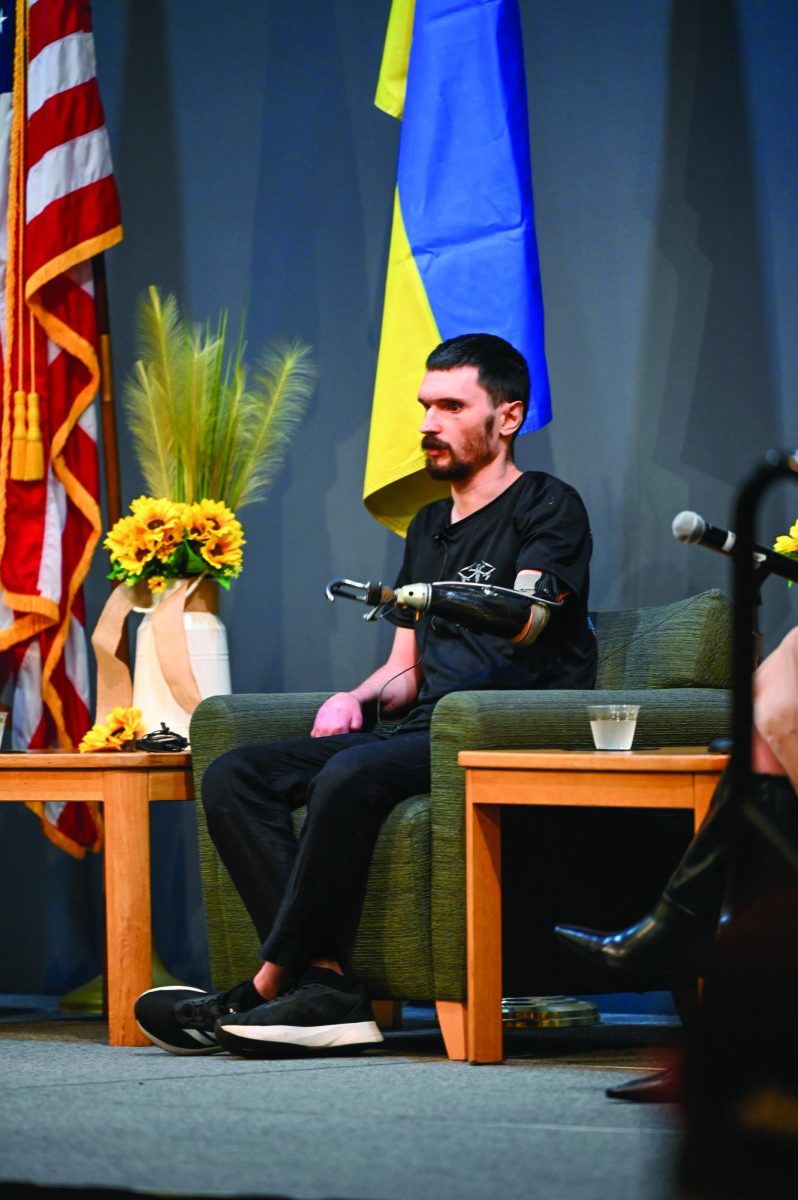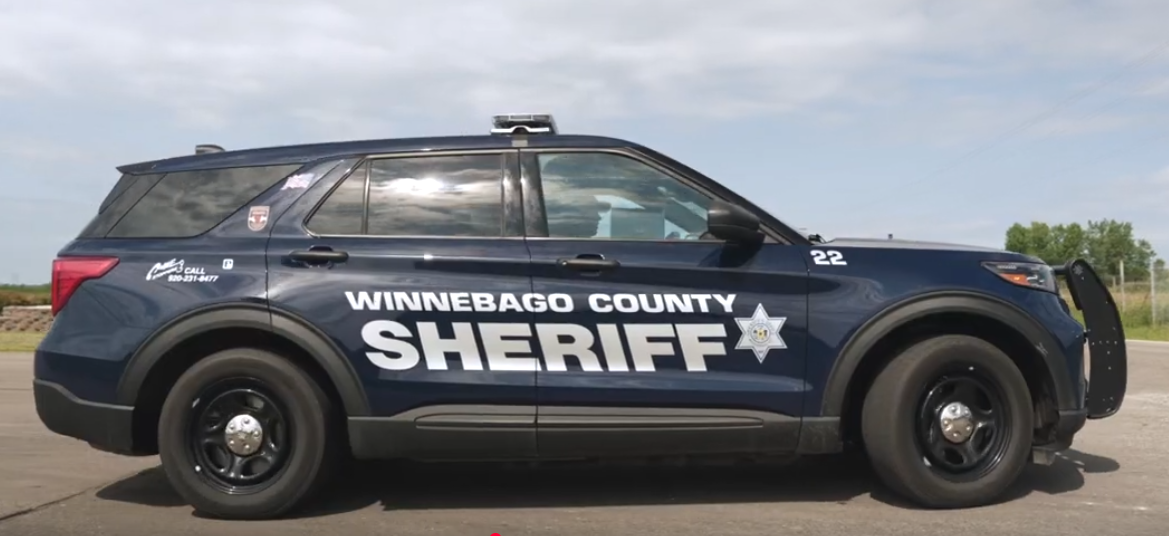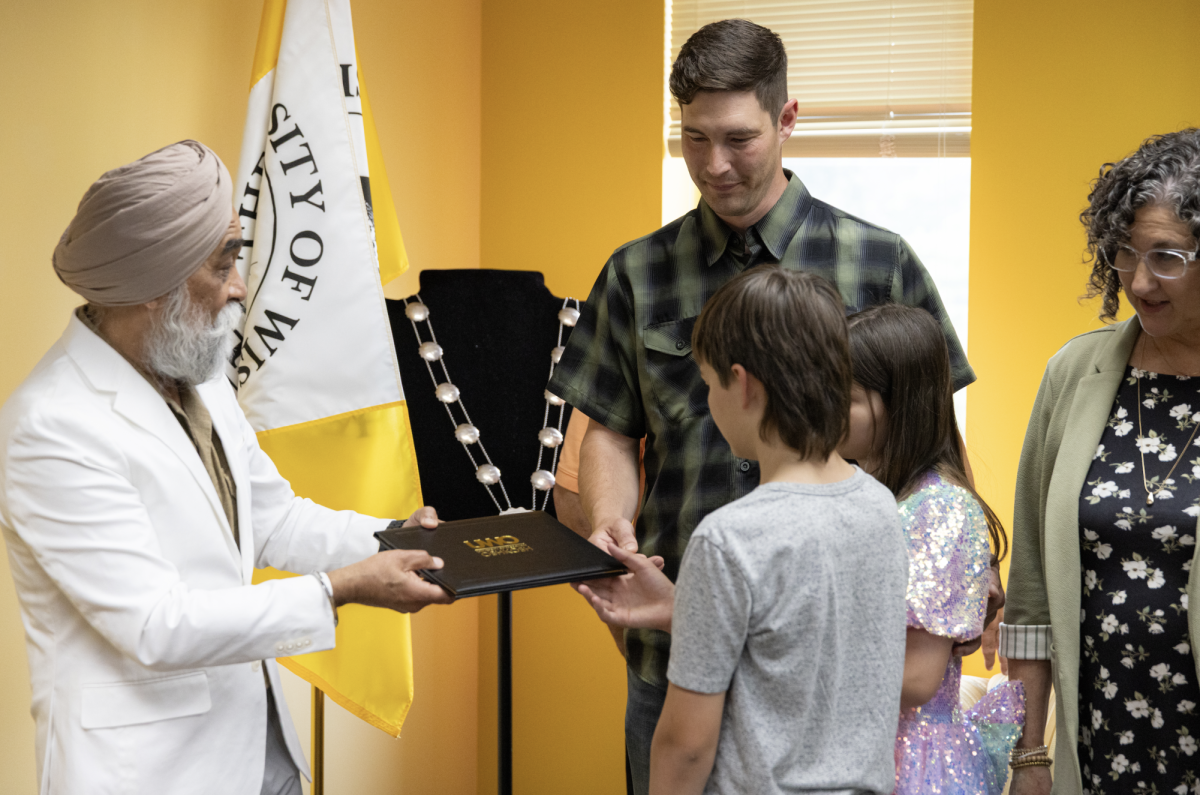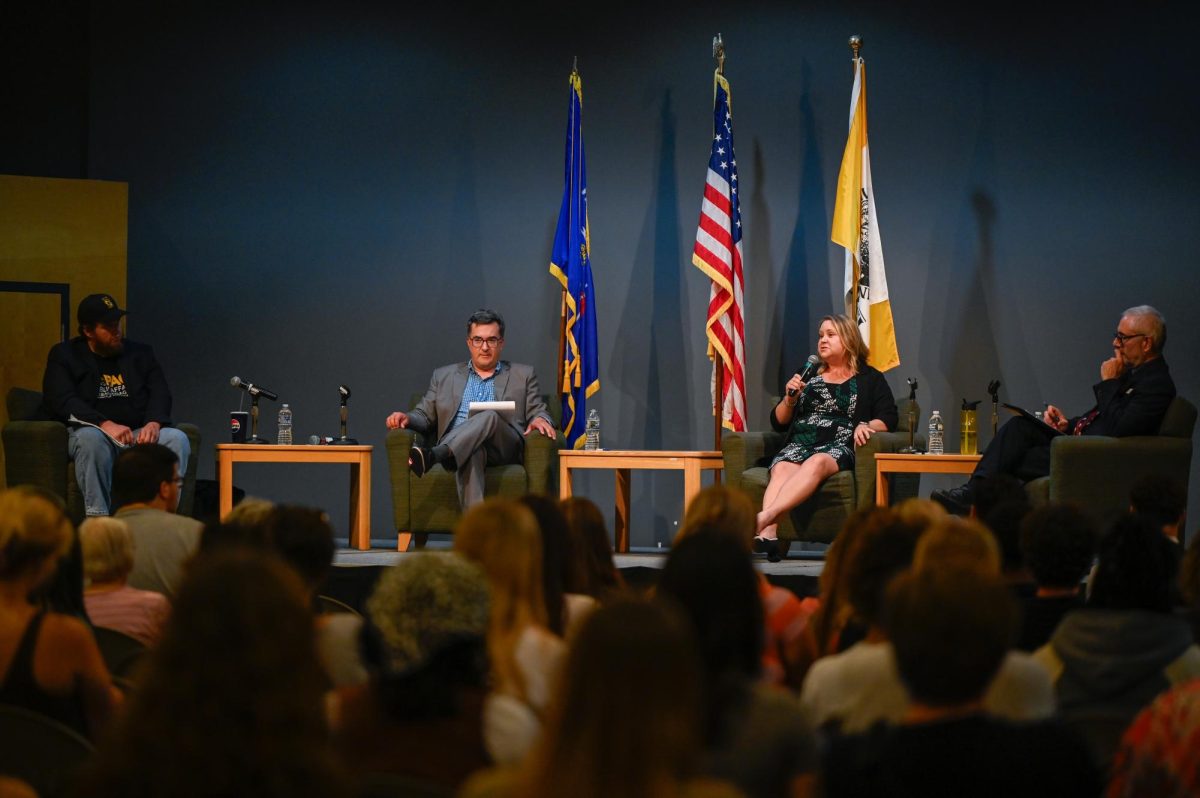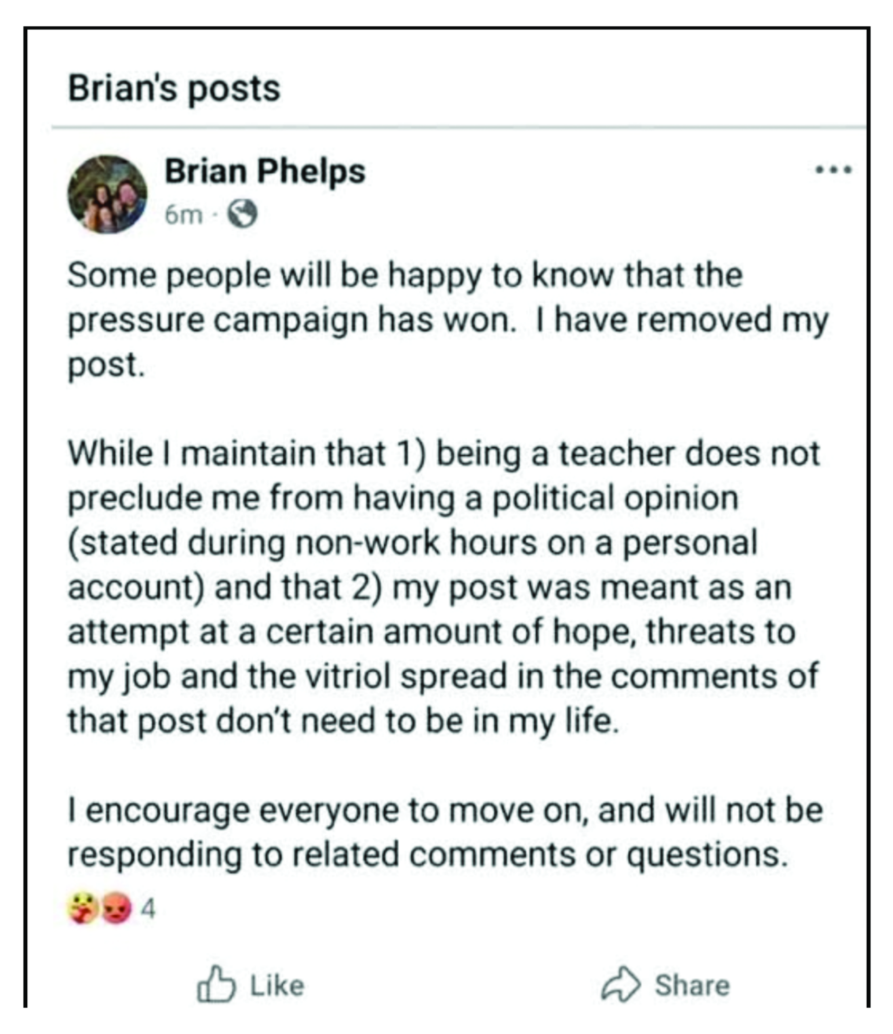Fragments of a Russian Iskander-K missile and a Shahed drone were displayed last week at UW Oshkosh’s Reeve Memorial Union, alongside a wall of “Unissued Diplomas” for Ukrainian college students killed in the war.
The event was sponsored by the campus Center for Civic and Community Engagement, the Tommy G. Thompson Center and thew U.S.-based nonprofit “Razom for Ukraine,” which helped bring these artifacts to campus.
UWO student Vladyslav Plyaka, from Ukraine, organized this event after interning with “Razom for Ukraine” and being inspired by destroyed missile and drone fragments in the group’s Washington, D.C., office.
“I realized that I must bring those to Oshkosh, Wisconsin,” he said. “So, I reached out to Mike Lueder and said, ‘I have a crazy idea —what do you think?’”
Mike Lueder, director of the Center for Civic and Community Engagement on campus, said he originally turned Plyaka away, but his persistence made the event possible.
“After his second request, I agreed,” he said. “He did the work applying for grants, securing funding for speakers, shipping drones to Oshkosh and developing this amazing exhibit.”
The event featured a reception with Davyd Piasetskyi, a Ukrainian veteran and drone operator who shared his experiences about the role of drones in modern warfare alongside his wife, Diana Braslavska-Piasetska.
Braslavska-Piasetska recalled the night the invasion began and said when she and her husband went to bed, they prepared themselves for an evacuation as Russian attacks struck Ukrainian cities.
“The night when we knew that Russia invaded and Ukrainian cities were being bombed, we went to sleep fully dressed, with our backpacks ready to go,” she said.
Piasetskyi said his initial priority after these see initial invasion was Braslavska-Piasetska’s safety.
“My first thought was how to get Diana vvsafe at first, and that was it,” he said. “So, on the second day I sent Diana to the western border, and she was able to leave for Portugal.”
Plyaka said he hoped Piasetskyi defied students’ expectations about war and educated people on how cheap FPV drones can be mass-produced for adoption on the battlefield.
“When people think about war, they imagine tanks and soldiers on land, but drones have changed the battlefield,” he said. “A $500 FPV drone can destroy a million-dollar tank, and smaller countries like Ukraine are mass producing them to counter bigger powers like Russia.”
Plyaka said the war affects more than just Ukraine, and highlighted international security concerns about its drones, referencing Sept. 10, 2025, when Russian drones entered Polish airspace.
“Russia just launched 19 drones toward Poland,” he said. “Three were shot down, but there is no safe place left in the world; the more informed people are, the safer they can be.”
Sharing w experiences from the front lines, drone operator Piasetskyi highlighted his concerns aboutwwdd the potential global impact of the war.
“It’s important to remember the war in Ukraine affects all of us,” he said. “The longer the United States waits to get more involved, the worse it’s going to be.”
Piasetskyi tried to enlist three days after Russia’s full-scale invasion in 2022, started his drone training in November 2023 and joined Ukraine’s Third Assault Brigade March 25, 2024.
Before the war, he worked remotely at an American I.T. company in Ukraine’s health sector and helped patients receive end-of-life care at home.
“I was helping patients with terminal illnesses spend their last days at home rather than in a hospital bed,” he said. “I had no intention of being a drone pilot before the war.”
While Piasetskyi said learning to operate FPV drones was fast, his training was intensive, and using a video game-like flight simulator, he mastered the basics to operate a drone quickly.
“When I bought my first drone, I spent roughly hours on a battlefield flight simulator,” he said. “But you can buy a drone and be good to fly in 40 hours or less.”
While the destroyed drones stand for the importance of being united beyond national borders, Plyaka said the exhibit honoring students killed during the conflict illustrates the cost of war on future generations.
“We showcase the stories of 40 Ukrainian college students killed at the beginning of the invasion,” he said. “So many young people, families, even newborns have been killed.”
The wall full of unissued diplomas is also personal for Plyaka as a Ukrainian student who knows friends that have died defending Ukraine.
“The exhibit also honors the memory of my friend; his call name was Stambul,” he said. “He became a drone operator, and sadly was killed on the battlefield in July last year.”
Plyaka said organizing the exhibit involved solving problems like finding drone parts and doing research into the technology, but he received support from his peers along the way.
“First I had to find the drone pieces and figure out how to ship them, because not every postal service wants to ship destroyed parts of a cruise missile,” he said. “Then I had to research drone warfare, plan the exhibit, and create an immersive experience.”
Plyaka said his work was rewarding and that he plans to organize more events as a voice for Ukraine, showcasing the brutal costs of Russia’s war.
“I want to create even bigger events in the future,” he said. “I’ve had people text me about how impactful this was, they want to do more advocacy, and that inspires me.”


